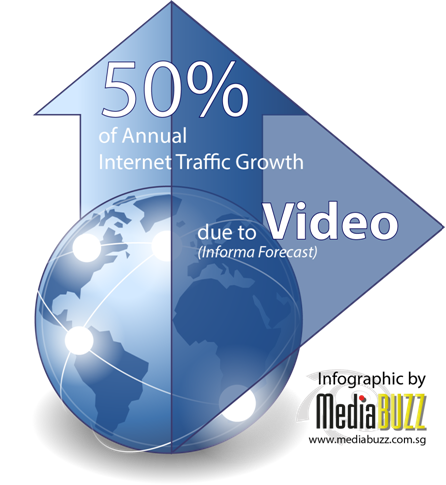
Video has and continues to drive telecoms traffic growth, but the kind of video traffic that is going to strain the network in the future isn’t what you might think…
Informa Telecoms & Media’s new report, ‘Congestion up ahead? Internet traffic and service forecasts, 2010-2015’ notes that video will be the driver behind 50% of annual internet traffic growth. That is an interesting finding, but where I think we need to focus our attention is not on one-way broadcast video, but on the impact of two-way video communications. It’s two-way video that is going to drive traffic volume growth and really test the network for quality and bandwidth availability as we move ahead.
 Today, a common place to spot this is every time we use a consumer VoIP / video service and the video gets jittery or the call drops. With two-way video, you can’t hide! Delivering real-time video in two directions is a more difficult challenge than simply making sure you get decent video quality downloaded one way.
Today, a common place to spot this is every time we use a consumer VoIP / video service and the video gets jittery or the call drops. With two-way video, you can’t hide! Delivering real-time video in two directions is a more difficult challenge than simply making sure you get decent video quality downloaded one way.
Service provider networks are going to be stressed with handling bandwidth growth and delivering the quality that end-users now demand. The comparison in size from a voice call to either a standard video conference call or a high-definition immersive video conference / two way video, is drastic. As more desktops and mobile endpoints are video capable, you will see video cannibalize voice, and in turn, really drive capacity demand.

Most service providers are aware that this happening on a global scale, across a large network, and that it is going to be a very real challenge. Service providers must get their entire infrastructure to support the stringent latency and jitter requirements to even be able to offer a seamless high end and two-way video service. And if they don’t, it’s very easy to see the lack of quality on the video screen right in front of you!
Informa expects peer-to-peer to be a generator of video traffic, growing at around 30% each year between 2010-2015, and it will continue to account for over 20% of total Internet traffic in the years to come. The facts say it all – I recommend service providers be prepared both in their network investments and their planning.

By John Hayduk, President, Product Management and Service Development, Tata Communications


